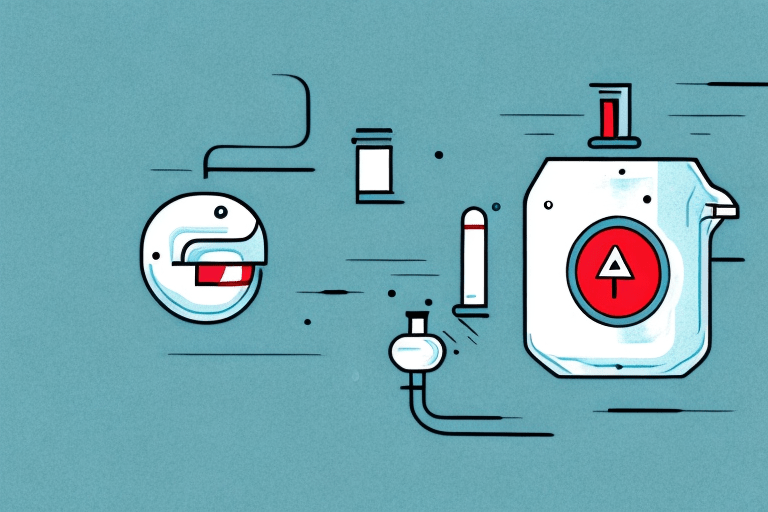If you’ve ever suffered from acid reflux, you know how uncomfortable and sometimes painful it can be. And if you’re a fan of soy sauce, you may have wondered whether it’s safe to continue consuming it.
In this article, we’ll delve into the relationship between soy sauce and acid reflux, exploring the causes of acid reflux, the composition of soy sauce, and possible alternatives for acid reflux sufferers.
Understanding Acid Reflux
First, let’s take a closer look at what acid reflux actually is. Acid reflux occurs when the contents of the stomach – including stomach acid – flow back into the esophagus, which is the tube that connects the mouth to the stomach. Often this is actually caused by not having enough acid in the stomach, because of problems such as H pylori and yeast overgrowth like Candida.
This can cause discomfort in the chest and throat, as well as a sour taste in the mouth and difficulty swallowing.
Acid reflux is a common condition that affects millions of people worldwide. While occasional acid reflux is normal, frequent and persistent acid reflux can lead to more serious health problems.
Causes of Acid Reflux
There are several factors that can contribute to acid reflux, including:
- Eating large meals or lying down after a meal: Eating large meals or lying down after a meal can put pressure on the stomach, causing the contents to flow back into the esophagus.
- Being overweight or obese: Excess weight can put pressure on the stomach and increase the risk of acid reflux.
- Smoking: Smoking can weaken the lower esophageal sphincter, which is the muscle that controls the flow of food from the esophagus to the stomach, making it easier for stomach acid to flow back into the esophagus.
- Pregnancy: The growing fetus can put pressure on the stomach, causing the contents to flow back into the esophagus.
- Hiatal hernia: A hiatal hernia occurs when the upper part of the stomach bulges through the diaphragm and into the chest cavity. This can weaken the lower esophageal sphincter and increase the risk of acid reflux.
- Eating a diet high in fatty or acidic foods: Foods that are high in fat or acidity can irritate the lining of the esophagus and increase the risk of acid reflux.
Symptoms of Acid Reflux
Common symptoms of acid reflux include:
- Heartburn: A burning sensation in the chest that may spread to the throat or neck.
- Regurgitation: The sensation of stomach contents flowing back into the mouth or throat.
- Burping: Excessive burping may be a symptom of acid reflux.
- Nausea: Nausea may be a symptom of acid reflux, especially if it is accompanied by other symptoms such as heartburn or regurgitation.
- Sore throat: Acid reflux can cause irritation and inflammation of the esophagus, leading to a sore throat.
- Coughing: A persistent cough may be a symptom of acid reflux, especially if it is accompanied by other symptoms such as heartburn or regurgitation.
Common Triggers for Acid Reflux
In addition to the factors listed above, there are certain foods and drinks that can trigger acid reflux, including:
- Tomatoes and tomato-based products: Tomatoes are high in acidity, which can irritate the lining of the esophagus and increase the risk of acid reflux when someone is sensitive.
- Citrus fruits and juices: Citrus fruits and juices are also high in acidity and can irritate the lining of the esophagus.
- Spicy foods: Spicy foods can irritate the lining of the esophagus and increase the risk of acid reflux.
- Garlic and onions: Garlic and onions can cause heartburn and other symptoms of acid reflux.
- Chocolate: Chocolate contains caffeine and other compounds that can increase the risk of acid reflux.
- Caffeine: Caffeine can relax the lower esophageal sphincter, making it easier for stomach acid to flow back into the esophagus.
- Alcohol: Alcohol can irritate the lining of the esophagus and increase the risk of acid reflux.
By avoiding these triggers and making lifestyle changes such as losing weight, quitting smoking, and eating smaller meals, you can reduce your risk of acid reflux and improve your overall health.
What's In Soy Sauce?
Now let’s take a closer look at soy sauce. Soy sauce is a condiment that’s made from soybeans, wheat, salt, and water. It’s typically used in Asian cuisine to add flavor to dishes.
Ingredients in Soy Sauce
The specific ingredients in soy sauce can vary depending on the brand and type, but here are some of the most common ingredients:
- Soybeans
- Wheat
- Salt
- Water
- Yeast extract
- Alcohol
- Sugar
- MSG (monosodium glutamate)
The Fermentation Process
Soy sauce is made through a process of fermentation, which involves combining the soybeans and wheat with a specific mold culture and allowing the mixture to ferment for several months. During the fermentation process, the soy sauce develops its characteristic flavor and aroma.
Different Types of Soy Sauce
There are many different types of soy sauce, with varying levels of saltiness, sweetness, and umami flavor. Some of the most common types include:
- Light (or thin) soy sauce
- Dark soy sauce
- Low-sodium soy sauce
- Tamari sauce (which is gluten-free)
- Coconut aminos (which is soy-free)
Soy Sauce and Acid Reflux
Sodium Content and Acid Reflux
One of the potential concerns with soy sauce and acid reflux is the high sodium content in many soy sauce brands. Sodium can trigger acid reflux in some individuals, so it’s important to monitor your sodium intake if you’re prone to acid reflux. However, there are low-sodium options available if you’re looking to reduce your sodium intake.
Fermented Foods and Acid Reflux
On the other hand, some proponents of natural health believe that fermented foods – including soy sauce – can actually aid in digestion and promote gut health, which can help reduce the symptoms of acid reflux. However, more research is needed to fully understand the relationship between fermented foods and acid reflux.
Personal Tolerance to Soy Sauce
Ultimately, whether or not soy sauce is bad for acid reflux may depend on your personal tolerance to the condiment. Some individuals with acid reflux find that soy sauce exacerbates their symptoms, while others are able to consume it without issue. It may be helpful to keep a food diary and track your symptoms to determine if soy sauce is a trigger for you.
Alternatives to Soy Sauce for Acid Reflux Sufferers
Low-Sodium Soy Sauce
If you’re looking for a lower-sodium option, many soy sauce brands now offer a low-sodium version. These sauces typically contain about 25% less sodium than regular soy sauce.
Coconut Aminos
If you’re looking for a soy-free option, coconut aminos may be a good choice. This condiment is made from the sap of coconut trees and is free from soy, gluten, and wheat. It has a slightly sweeter flavor than soy sauce, but can be used in a similar way.
Tamari Sauce
Tamari sauce is a type of soy sauce that’s gluten-free and contains little to no wheat (depending on the brand). It has a slightly thicker consistency than regular soy sauce and a more savory, umami flavor.
Conclusion
So is soy sauce bad for acid reflux? The answer may depend on your personal tolerance and the specific type of soy sauce you’re consuming. However, if you’re prone to acid reflux, it may be worth monitoring your intake and opting for low-sodium or soy-free alternatives if necessary. By taking a proactive approach to managing your acid reflux, you can continue to enjoy your favorite foods – including soy sauce – in a way that’s safe and comfortable for you.









